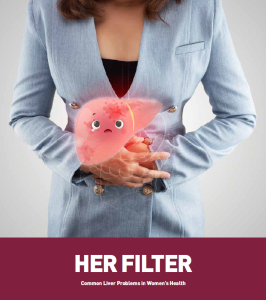
Liver health is vital for overall health and well-being in women. The liver plays a crucial role in maintaining the body’s metabolic processes, including the breakdown of nutrients, the removal of toxins, and the regulation of blood sugar levels. The liver also produces bile, which is necessary for the digestion of fats. Unfortunately, liver disorders are becoming increasingly common in women, and many of these disorders can have serious consequences if left untreated. In this article, we will discuss some of the most common liver disorders that affect women.
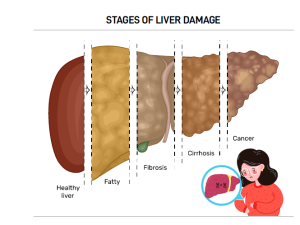
FATTY LIVER
Madam A came to my clinic with ultrasound done for her health screening, which showed fatty liver and mildly deranged liver panel test. She was surprised by the finding as she thought fatty liver only happened to people who are obese. Madam A works as an IT programmer and sometimes, she has to work overtime for her projects. She liked to snack when staying up late at night. She also did not exercise regularly due to her busy work schedule, and she enjoyed having a few glasses of wine and beer during weekends. Her weight was 66kg and her BMI (body mass index = body weight/height2) was 26.
Fatty liver is a common liver disorder that affects more than 30% of the population. It occurs when excess fat is deposited in the liver. A healthy liver contains a small amount of fat, but when fat reaches more than 5% of the liver’s weight, it can lead to serious health problems. The spectrum of this disorder ranges from simple fatty liver to fatty liver with inflammation and damage to liver cells. The latter can progress to cirrhosis which is a condition where healthy liver tissue is replaced by scar tissue, and which can eventually lead to liver cancer.
There are two types of fatty liver based on cause: alcoholic and non-alcoholic. Alcoholic fatty liver disease is caused by heavy drinking, whereas non-alcoholic fatty liver disease (NAFLD) is associated with metabolic syndromes, including obesity, type 2 diabetes, high blood pressure and high cholesterol. Alcohol use, even in moderate amounts in people with NAFLD, can cause additional damage and fat accumulation.
In the case of Madam A, it is apparent that she possessed a few risk factors for fatty liver. She was advised to reduce her weight through diet and exercise. The general principle in achieving gradual weight loss is to decrease calorie consumption and increase calorie expenditure. She carefully monitored her calorie intake until it is 10% less than her daily calorie requirement. In addition, she started jogging and briskwalking every morning for around 30 minutes before going to work. She has since reduced her intake of snacks and alcohol as well. On her clinic visit three months later, her liver panel had normalised and her weight was reduced to 60kg.
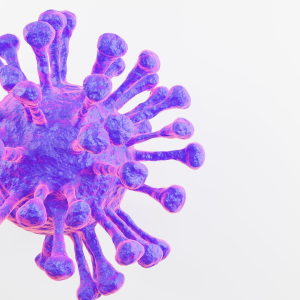
HEPATITIS B
Madam B was referred to my clinic by her obstetrician as her hepatitis B antigen (HBsAg) was positive during antenatal screening. She was very anxious and worried that her baby would be infected. She shared that her mother had hepatitis B related cirrhosis, and one of her brothers was also a hepatitis B carrier. However she had not been tested for hepatitis B until recently.
3.6% of adults in Singapore are affected by chronic hepatitis B. Globally, the World Health Organisation (WHO) estimated that 296 million people were living with chronic hepatitis B infection in 2019, with 1.5 million new infections each year. In 2019, hepatitis B resulted in an estimated 820,000 deaths, mostly from hepatitis B related cirrhosis and primary liver cancer.
Hepatitis B is most commonly spread from mother to child at birth (perinatal or vertical transmission) or through horizontal transmission (exposure to infected blood), especially from an infected child to an uninfected child during the first five years of life. It can also be spread by needlestick injury, tattooing, piercing and exposure to infected blood and body fluids, such as during blood transfusion or sexual intercourse.
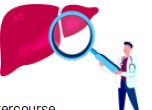
Madam B was reassured that there was no immediate risk of hepatitis B transmission while her baby was in her womb. Further tests showed that she had high viral count in her blood, but her liver panel test was normal. A few measures were implemented to reduce transmission of hepatitis B to her baby. During late pregnancy (third trimester), Madam B started taking hepatitis B antiviral treatment to reduce viral count. She subsequently delivered a healthy baby boy who was given both hepatitis B immunoglobulin and vaccine at birth. After a few months at the paediatric clinic, her baby boy was tested negative for hepatitis B, and has developed antibodies against the virus.
Madam B’s hepatitis B care did not stop after pregnancy. She followed up with regular blood tests and ultrasound to monitor for any hepatitis B complications, such as cirrhosis and liver tumour. She has also encouraged the rest of her family to be tested for hepatitis B.
AUTOIMMUNE HEPATITIS
Madam C was referred to my clinic by her family doctor for abnormal liver panel. Her family doctor has excluded common causes such as hepatitis B, hepatitis C and fatty liver. Madam C exercised regularly and did not drink alcohol. Further tests showed that she had elevated levels of certain immunoglobulins and the presence of autoantibodies in her blood. She then underwent a liver biopsy, with test results showing a characteristic pattern of inflammation which confirmed the diagnosis of autoimmune hepatitis.
Compared to fatty liver and hepatitis B, autoimmune hepatitis is a relatively rarer cause of chronic liver disease. It is more common in women than men. It is thought to be an inflammatory response directed at the liver in a genetically predisposed patient after exposure to a trigger. The trigger can be an environmental trigger, such as a viral infection, a medication/herb or immunisation, but it often remains unknown in the majority of patients.
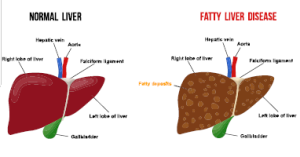
Like most other autoimmune conditions, autoimmune hepatitis is typically treated with medications that suppress the immune system, such as steroids and azathioprine. During her follow-up visit, Madam C expressed concern on the side effects of steroids that she had read about from the Internet, including weight gain, abnormal blood sugar levels and osteoporosis. I acknowledged that her concerns were very valid. She was prescribed with a particular type of steroid with high clearance by the liver that has less systemic side-effects, together with azathioprine. Over the next three months, her liver panel improved and her steroid dose was gradually cut down and eventually stopped. Currently, her condition is well controlled with azathioprine alone.
LIVER DISEASES IN PREGNANCY
Madam D, who was 28 weeks pregnant, visited her dermatologist for intense itch in her palms and soles, which made it difficult for her to fall asleep. The first few months of her pregnancy had been quite smooth-sailing, and she had no history of other liver problems. After assessment, her dermatologist suspected intrahepatic cholestasis of pregnancy (ICP) and referred her to my clinic.
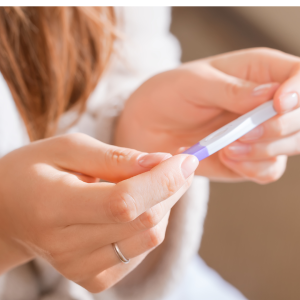
Pregnancy is a special period in a woman’s life, whereby physical and physiological changes occur for the mother’s body to accept the foetus and allow the baby to grow. The assessment of liver disorders in pregnancy includes determining if the patient has pre-existing or coincidental liver disease not related to pregnancy versus liver disease related to pregnancy.
ICP is the most common pregnancy-related liver disease. The exact cause is not well known, but some cases are associated with genetic defect, gallstone disease, fatty liver and hepatitis C infection. In Madam D’s case, the itch was felt in her palms and soles, which made her ICP unique from other pregnancy-related skin conditions. Further laboratory tests showed raised bile acid levels in her blood and mildly deranged liver test. After starting medication that lowered bile acid in her blood and another that relieved the itch, Madam D felt better and was able to sleep at night. Her obstetrician was informed about her ICP and her baby’s health was closely monitored. She delivered a healthy baby girl at 37 weeks.
CONCLUSION
In conclusion, liver health is crucial for overall well-being in women. It is essential to recognise the symptoms of liver disorders and seek medical attention promptly to prevent further complications. A healthy lifestyle, including a balanced diet, regular exercise and limiting alcohol consumption, can help to prevent many liver disorders in women.

Dr Lu Wei
Gastroenterologist
GUTCARE
MBBS, MRCP UK, MMed
Dr Lu Wei is a specialist in Gastroenterology, with subspecialty interests in Digestive Cancer Screening, Liver Disorders, Endoscopic Ultrasound, and Pancreatobiliary Disorders. She obtained her basic medical degree (MBBS) from NUS in 2006, and underwent internal medicine and gastroenterology training in NUH. She attained Membership of the Royal College of Physician (MRCP UK) in 2010, Master of Medicine (MMed) in 2011, and gastroenterology specialist accreditation in 2013. Dr Lu is experienced in performing diagnostic and screening scopes such as gastroscopy, colonoscopy including advanced imaging techniques like narrow-band imaging, and video capsule endoscopy. She also performed therapeutic endoscopic procedures such as polypectomy, percutaneous endoscopic gastrostomy (PEG) insertion, endoscopic treatment of bleeding ulcers, ligation and injection of varices. Dr Lu built the endoscopic ultrasound service at NTFGH and served at the hospital’s endoscopy committee.
Connect
Facebook: /gutcareclinic
Instagran: /gutcaresg
Email: drluwei@gutcare.com.sg
Whatsapp: +65 9783 0015
Website: www.gutcare.com.sg












